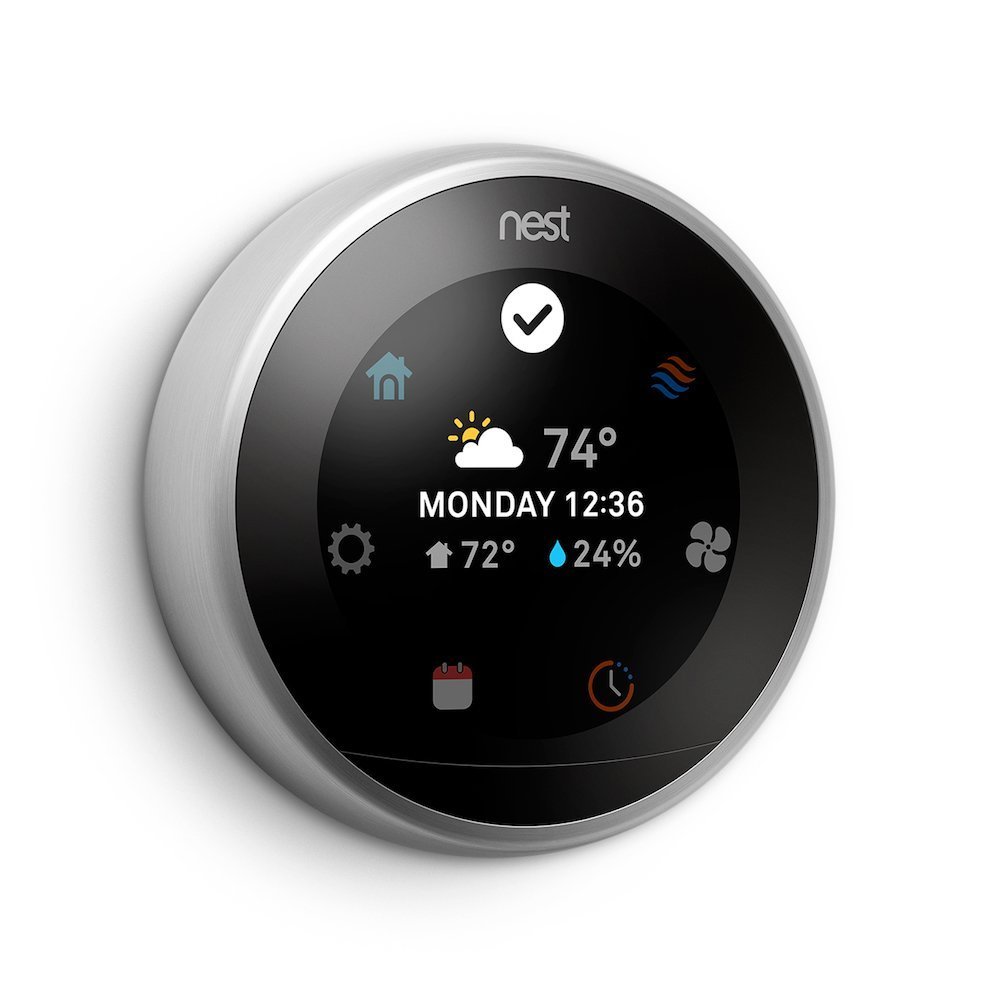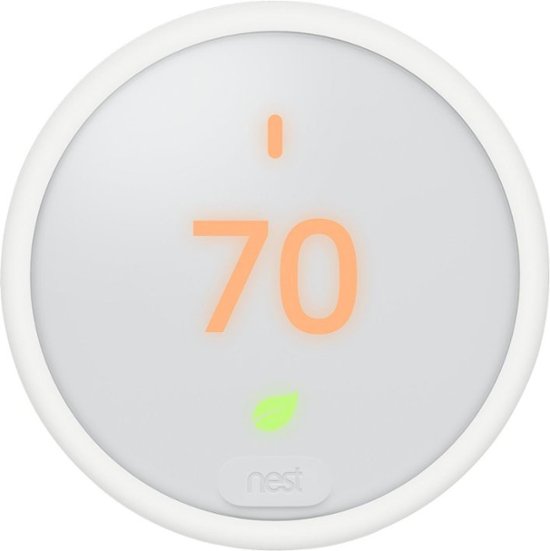At Mobile Nations, we love smart home tech, and I've been a Nest user since the first generation in 2012. We know what makes them tick and why that matters.
Nest 3rd Generation
Full-color, big display
Pros
- 3.25-inch full color display
- Far-Field Activity sensor
- Supports 95 percent of all heating and cooling systems
- Multiple color options
Cons
- Price
- No Homekit support
The latest Nest Learning Thermostat works with almost every type of HVAC system, has a display that's readable from across the room, and supports FarSight to help save money by knowing when you're home. It even comes in seven different colors! It's not cheap, though.
Nest E
Save energy and money
Pros
- Price
- Supports 85 percent of all systems
Cons
- No Far-Field Sensor
- No Homekit support
The Nest E is the most inexpensive model from the company and does almost everything the pricier models can. It does lack FarSight and the display is pretty basic, though.
Nest makes easy-to-install and easy-to-use smart thermostats, and both the 3rd-generation model and the Nest E are current products that work great. They both work for almost every type of HVAC system and can even control a water boiler for steam heat or hot water. The differences are more than just cosmetic, though.
Get smart and save money
The major difference you need to know is that the Nest E doesn't support Nest's FarSight tech. It's the feature that can sense you walking in the door, will wake up the thermostat, and can override any energy-saving settings you might have programmed for the times you're not home. The Nest E does have a proximity and occupancy sensor, but it's not quite the same and doesn't work nearly as well.
| Nest 3rd Gen | Nest E | |
|---|---|---|
| Dimensions | Diameter 3.25 inches Depth 1.21 inches |
Diameter 3.19 inches Depth 1.14 inches |
| Display | 3.25 inch 480 x 480 px |
1.76 inch 320 x 320 px |
| Connectivity | 802.11 b/g/n 802.15.4 Bluetooth LE |
802.11 b/g/n 802.15.4 Bluetooth LE |
| App-control | Nest App Amazon Alexa Google Assistant |
Nest App Amazon Alexa Google Assistant |
| Sensors | Temperature Humidity Near-Field Activity Far-Field Activity Ambient Light |
Temperature Humidity Proximity/Occupancy Ambient Light |
| Features | Auto-Schedule Airwave Nest Leaf Auto-Away Energy History Time to Temperature System Match Early On Heat Pump Balance FarSight Water / Boiler control |
Auto-Schedule Airwave Nest Leaf Auto-Away Energy History Time to Temperature System Match Early On Heat Pump Balance Water / Boiler control |
| Colors | Stainless steel white black copper polished steel brass mirror black |
White |
| Trim Ring | Polished metal | Polycarbonate |
If you want a simple to install and use smart thermostat that will save you money on your heating and cooling bills, Nest has you covered. Both models are compatible with most HVAC systems and a combination of the Nest App and your favorite Smart Home Assistant will keep you comfortable while saving potentially hundreds every year. A recent audit from my power company showed a $181 savings in 2017 for people who used smart environmental controls, and that's a good bit of change.
There are two differences that matter between the Nest 3rd Gen and the Nest E: The look of the unit itself and support for Nest's FarSight. The first is readily obvious; the Nest E comes in a white polycarbonite shell with a smaller display that gives less information at a glance than the more expensive Nest 3rd Gen. Though it's worth mentioning that a field-of-view effect makes the Nest E's display look like part of the unit and not a screen and is a nice touch.
Nest's FarSight is a neat trick, but I wouldn't let it be the deciding factor.
FarSight is a Nest feature that's designed to let you know what's going on from across the room. Most people love it for one reason — when they come home they can see that the Nest knows they are home, has adjusted the target temperature (if needed) because of it, and it's an indicator that says everything is working as expected. The Nest E lacks FarSight and doesn't have the sensor required.
This isn't a dealbreaker, though. The Nest E does have proximity and occupancy sensors that tell it someone is at home so it too can make adjustments, you just don't know it from across the room — you'll have to walk over and check or use the app on your phone.
FarSight is a nifty feature. In my home, we actually use it to show the current time because we're smartphone junkies who can see any relevant info with the tap of a home screen icon. It's just not necessarily worth the added cost of the 3rd Generation. The better display and broader selection of colors might be, though, as your home is an investment and matching any decor is often worth some added costs.
One final thing to know about both models is the lack of support for Apple Homekit. If you're using Homekit as your smart home platform of choice, you'll need to go with an Ecobee, which is also an excellent choice.
As a long-time Nest user, I say as long as you're OK with white, save the money and go with the Nest E. Make sure it works with your system first though!
Nest 3rd Gen
Full-color, big display
The Nest flagship
The latest Nest Learning Thermostat works with almost every type of HVAC system, has a display that's readable from across the room, and supports FarSight to help save money by knowing when you're home. It might be too expensive for some, however.
Nest E
Save energy and money
Nest's best value
The Nest E is the most inexpensive model from the company and does almost everything the pricier models can. It does lack FarSight and the display is pretty basic, though.


Tidak ada komentar:
Posting Komentar